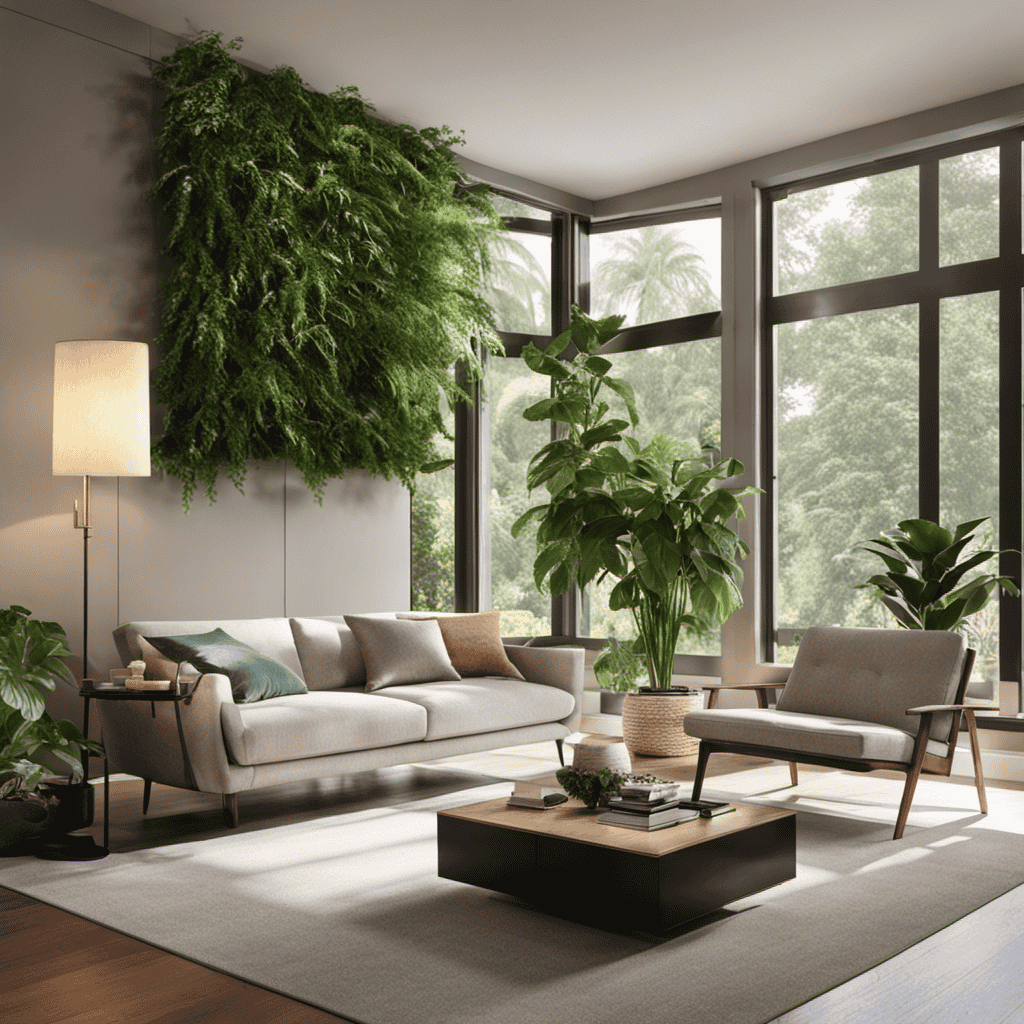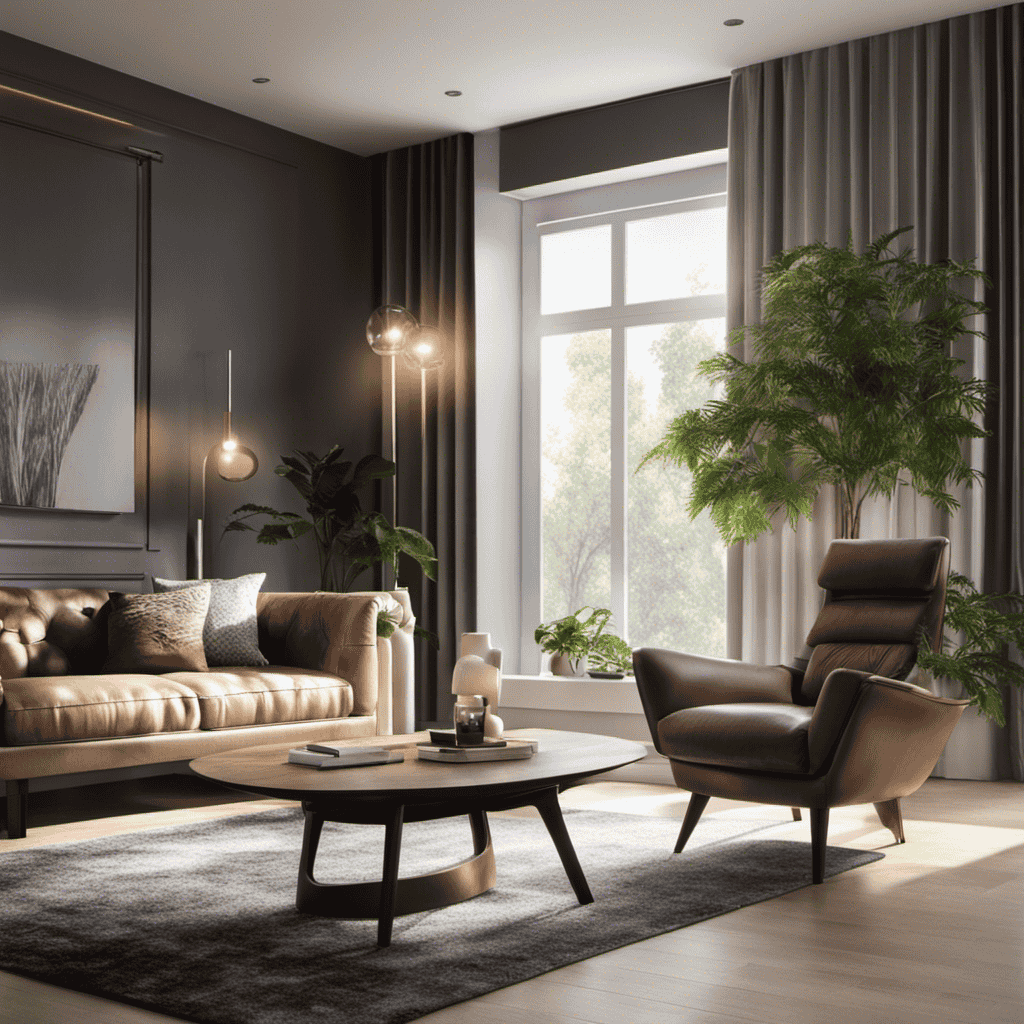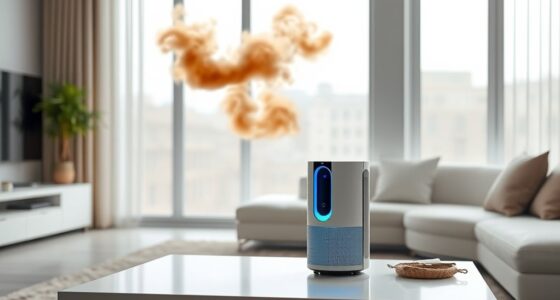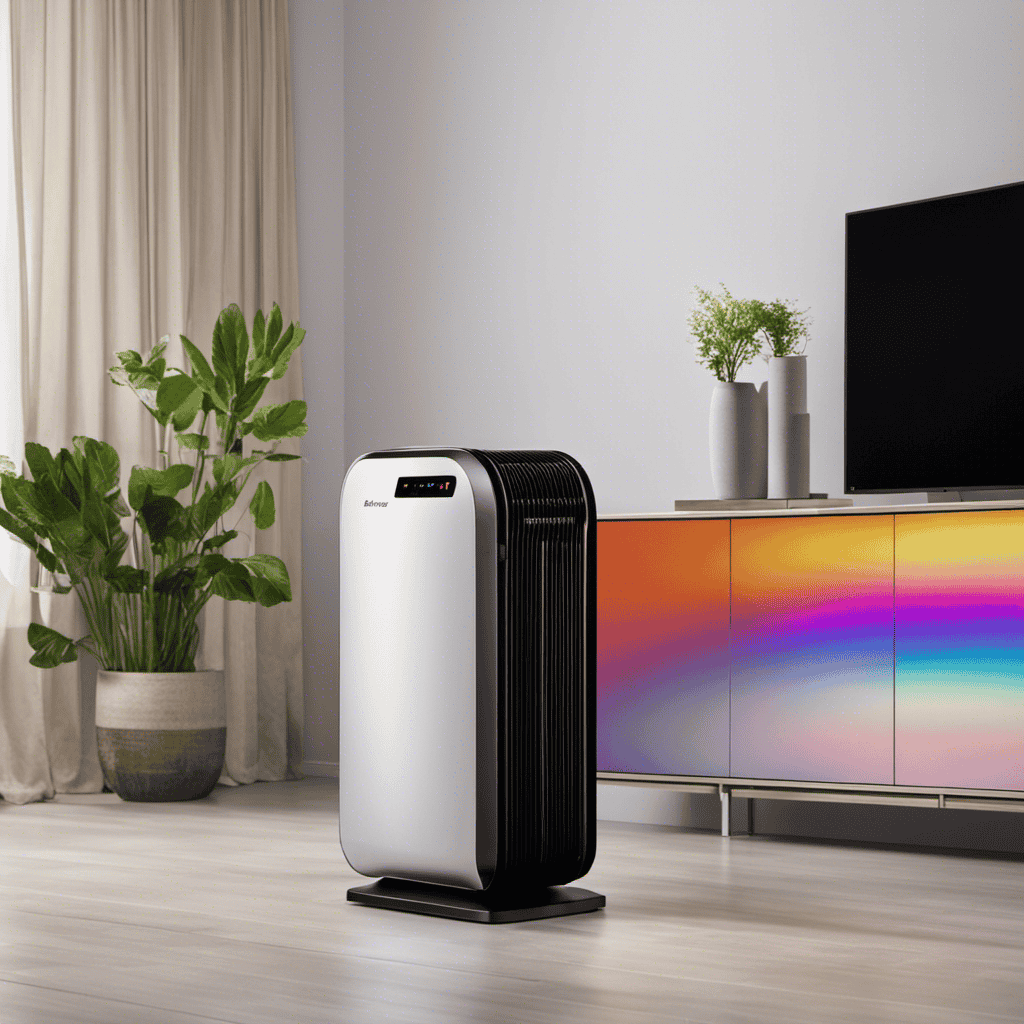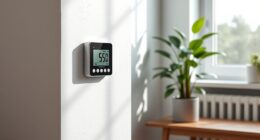I understand your doubt: “Do I really need to invest in an air purifier?” Let me assure you, after conducting thorough research, the answer is definitely yes.
In this article, I will guide you through the key factors to consider when searching for the perfect air purifier. From filter type to room size and noise level, I will break down the technical aspects to help you make an informed decision.
So, let’s dive in and find the air purifier that suits your needs.
Key Takeaways
- Consider the filter type and maintenance requirements when choosing an air purifier.
- Research different air purification technologies and their effectiveness in capturing small particles, removing odors, and killing bacteria and viruses.
- Take into account the size of the room and the coverage area to determine the appropriate air purifier size.
- Compare the noise levels of different air purifier models and find the right balance between air purification and noise level.
Filter Type
When choosing an air purifier, it’s important to consider the filter type. The filter is a crucial component of an air purifier as it determines the effectiveness of removing pollutants from the air. There are different types of filters available, each with its own advantages and disadvantages.
HEPA filters, for example, are highly effective in trapping small particles and allergens, making them ideal for those with respiratory issues or allergies. They require regular maintenance, such as cleaning or replacement, to ensure optimum performance.
Activated carbon filters, on the other hand, are excellent at removing odors and chemicals from the air. They also need periodic replacement to continue providing clean air.
Considering the filter type is essential for maintaining air purifier performance and reaping the health benefits it offers.
Moving on to the next section, let’s explore the various air purification technologies available.
Air Purification Technology
You should consider researching different air purification technologies to find the best one for your needs.
When it comes to air purifier maintenance, it is crucial to understand the different types of technologies available. There are several options to choose from, including High Efficiency Particulate Air (HEPA) filters, activated carbon filters, and ultraviolet (UV) germicidal irradiation.
HEPA filters are known for their ability to capture small particles, such as pollen, dust, and pet dander. Activated carbon filters are effective in removing odors and harmful gases. UV germicidal irradiation uses ultraviolet light to kill bacteria and viruses.
The health benefits of air purification are significant. By removing pollutants and allergens from the air, air purifiers can help reduce the risk of respiratory problems, allergies, and asthma. Regular maintenance, such as replacing filters and cleaning the unit, is essential to ensure optimal performance and effectiveness.
Room Size and Coverage
To determine the appropriate air purifier for your space, it’s important to consider the size of the room and the coverage area. Here are four key factors to keep in mind when choosing an air purifier:
-
Room size: Measure the square footage of your room to determine how large of an air purifier you need. A smaller room may only require a compact purifier, while larger spaces will benefit from a more powerful unit.
-
Coverage area: Pay attention to the manufacturer’s specifications regarding the air purifier’s coverage area. This will tell you how much square footage the purifier can effectively clean, ensuring that it can adequately filter the air in your room.
-
Air purifier maintenance: Consider the maintenance requirements of the air purifier you’re interested in. Some models may require regular filter replacements or cleaning, which could add to the overall cost and effort involved in using the purifier.
-
Air purifier price comparison: Compare the prices of different air purifiers to find one that fits your budget. Keep in mind that more expensive models may offer additional features or better performance, but there are also affordable options available that can effectively clean your air.
Noise Level
The noise level of different models should be taken into consideration when choosing an air purifier. Sound pollution and sleep disturbances can have a significant impact on our overall well-being. To help you make an informed decision, I have compiled a table comparing the noise levels of three popular air purifier models:
| Model | Noise Level (dB) | Recommended Room Size (sq. ft) |
|---|---|---|
| Model A | 35 | 300 |
| Model B | 45 | 500 |
| Model C | 50 | 800 |
As you can see, Model A has the lowest noise level at 35dB, making it a suitable option for smaller rooms. However, if you have a larger space, Model C may be a better choice despite its slightly higher noise level of 50dB. Remember, finding the right balance between air purification and noise level is crucial for a good night’s sleep and minimizing sound pollution in your home. Choose wisely!
Energy Efficiency
When considering the energy efficiency of air purifiers, two key points to examine are power consumption comparison and the energy-saving features available.
Power consumption comparison allows us to understand how much energy different air purifiers consume and make informed decisions based on our energy-saving goals.
Energy-saving features, on the other hand, provide options for reducing power usage and maximizing efficiency.
Power Consumption Comparison
Check out the power consumption comparison to see which air purifier saves you the most energy.
When choosing an air purifier, it’s important to consider not only its effectiveness in improving air quality but also its cost effectiveness in terms of energy consumption. Here are four key factors to consider in the power consumption comparison:
-
Energy Star Certification: Look for air purifiers that have been certified by Energy Star, as they meet strict energy efficiency guidelines set by the Environmental Protection Agency. These models are designed to consume less energy while still providing effective air purification.
-
Power Consumption Ratings: Compare the power consumption ratings of different air purifiers. Look for models that have lower wattage or energy usage per hour, as this indicates that they consume less electricity.
-
Purification Efficiency: Consider the air purification efficiency of each model. Look for air purifiers that have higher Clean Air Delivery Rate (CADR) ratings, as they can effectively remove pollutants from the air faster, reducing the need for prolonged operation and saving energy.
-
Smart Features: Some air purifiers come with smart features, such as sensors that detect air quality and adjust the purification settings accordingly. These features can optimize energy consumption by running the purifier only when necessary, saving energy and reducing costs.
Energy-Saving Features Available
Consider models with smart features, like sensors that detect air quality and adjust settings accordingly. These models can optimize energy consumption by minimizing power usage while still maintaining effective air purification.
With smart home integration, these air purifiers can be controlled remotely, allowing for convenient management of energy-saving settings. By utilizing energy-saving modes, the air purifier can adjust its airflow and fan speed to ensure efficient operation without wasting unnecessary power.
Some models even have built-in timers that can be programmed to operate during specific times of the day, further reducing energy consumption. Additionally, smart home integration allows for seamless integration with other smart devices, enabling the air purifier to be part of an overall energy-saving ecosystem.
Considering models with these energy-saving features can help optimize energy consumption and contribute to a more sustainable and efficient home environment.
Additional Features
One thing to look out for when choosing an air purifier is whether it has additional features like a built-in air quality sensor. These additional features can greatly enhance the functionality and effectiveness of the air purifier.
Here are four additional features to consider:
-
Smart functionality: Some air purifiers come with smart features that allow you to control and monitor the device remotely through a smartphone app. This allows for convenient and easy operation.
-
Design aesthetics: Air purifiers now come in a variety of designs and colors to suit different interior styles. Consider an air purifier that not only cleans the air but also adds a touch of style to your living space.
-
Night mode: This feature is particularly useful for bedrooms. It allows the air purifier to operate silently and with dimmed lights, ensuring a peaceful and uninterrupted sleep.
-
Filter replacement indicator: Keeping track of filter replacement can be a hassle. Look for an air purifier that has a filter replacement indicator that notifies you when it’s time to change the filter, ensuring optimal performance.
Considering these additional features can help you choose an air purifier that not only purifies the air but also offers added convenience and functionality to improve your indoor air quality.
Frequently Asked Questions
Can an Air Purifier Remove All Types of Pollutants From the Air?
Yes, an air purifier can remove various types of pollutants from the air. Its effectiveness depends on the specific purifier model and the type of pollutants present, such as dust, allergens, smoke, and odors.
How Often Should the Filters Be Replaced in an Air Purifier?
Filters in air purifiers need replacement at different frequencies depending on usage and filter type. Regular replacements maintain optimal performance and ensure clean air. Remember, "out of sight, out of mind" doesn’t apply to air quality.
Can an Air Purifier Help With Allergies and Asthma Symptoms?
An air purifier can be highly effective in reducing allergy and asthma symptoms. Its benefits include removing allergens and irritants from the air, improving indoor air quality, and providing relief for those with respiratory conditions.
Are There Any Health Risks Associated With Using an Air Purifier?
Using an air purifier can have health benefits by improving air quality. However, it’s important to consider potential risks such as ozone emissions, filter maintenance, and the effectiveness of the purifier in removing specific allergens or pollutants.
Can an Air Purifier Eliminate Odors From Cooking or Pets?
Yes, an air purifier can eliminate odors from cooking or pets. I have found that air purifiers designed for small spaces are effective in removing these odors. They also offer benefits during flu season by reducing airborne germs.
Are Air Purifiers with Copper Plates More Effective in Removing Airborne Contaminants?
Yes, air purifiers with copper plates are more effective in removing airborne contaminants. The copper plates have antimicrobial properties that help in neutralizing harmful pathogens and pollutants in the air. This makes them a powerful and efficient option for improving indoor air quality.
Conclusion
After conducting extensive research on air purifiers, I’ve concluded that when choosing the right one for your needs, it’s crucial to consider various factors.
From filter type and air purification technology to room size and coverage, noise level, energy efficiency, and additional features, each aspect plays a pivotal role in ensuring optimal air quality.
Interestingly, studies have shown that indoor air can be up to five times more polluted than outdoor air, making the selection of a high-quality air purifier even more vital for maintaining a healthy living environment.
